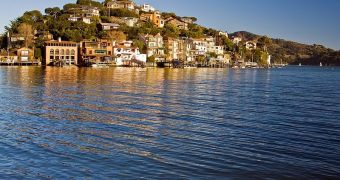The recent events which shook and washed Japan made the researchers redefine trees' importance in fighting natural catastrophes of such proportions. Experts say that Indonesia could have had less victims after the tsunami which washed its surface in 2004, if only it relied on the benefits provided by coastal trees.
There are several studies which highlight the fact that vegetation cultivated in areas which are prone to feel the consequences of tsunami phenomenon are likely to minimize the effects of the catastrophe.
Despite the fact that this information isn't new, it has been criticized throughout time by skeptics who have affirmed that such studies face the lack of “ empirical evidence.”
In theory, the strategy seems almost heaven sent. According to scientists, planting trees in the vulnerable areas could preserve the entire ecosystem from flooding which implies human casualties and material damages.
In the past, other experts fought this assumption, considering it a false rumor which would only mislead the governments and the population, leaving it even more exposed to such calamities.
“Unsubstantiated statements regarding protection provided by coastal vegetation can be obstructive and even dangerous, providing a false sense of security,” stated Georg Cadisch, an agronomist from the University of Hohenheim in Germany.
Despite this alarming warning, mangrove forests or rubber plantations are able to minimize the devastating power displayed by giant deadly waves which have the ability to wipe entire communities off the face of the Earth in a matter of seconds.
Experts say that the appropriate coastal vegetation can reduce the damage caused by a potential impact by up to 5%. "For the first time, we were able to quantify the mitigation potential of coastal vegetation, particularly cultivated trees, on the impact of a very large tsunami," continued Cadisch.
Forests aren't always beneficial and their location is essential when dealing with the threat of a killer wave. If the tree population is located behind a human establishment, it could stop people from saving their lives, by slowing down their efforts to get away.
Apparently, there is a recipe for decreasing the number of human casualties when expecting such a phenomenon of such tremendous proportions. "It might be better to have open fields, annual crops and escape routes," concluded Cadisch.

 14 DAY TRIAL //
14 DAY TRIAL //